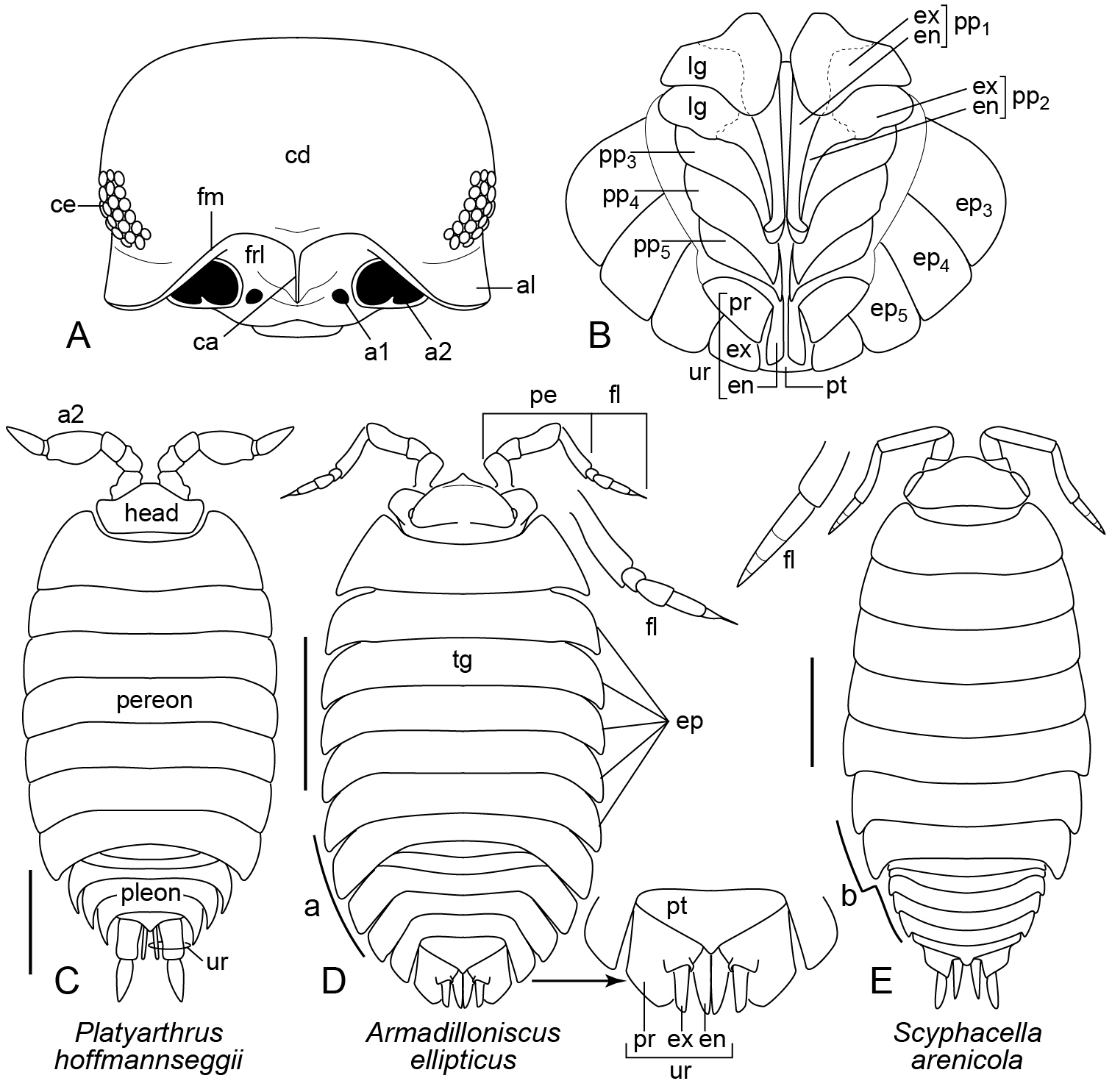
|
||
|
A Cylisticus convexus, head, dorsoanterior view, antennae removed (based on Schmidt 2008: figure 32) B Armadillidium vulgare, male pleon, ventral view C Platyarthrus hoffmannseggii (after Hopkin 2014: figure 17) D Armadilloniscus ellipticus, insets highlight uropods and antennal flagellum E Scyphacella arenicola, inset highlights antennal flagellum. Abbreviations: a lateral perimeter narrows gradually from pereon to pleon; a1 socket of antenna I; a2 antenna II or socket of antenna II; al anterolateral lobe; b lateral perimeter narrows abruptly from pereon to pleon; ca carina; cd cephalic dorsum; ce compound eye; en endopodite; ex exopodite; fl flagellum; fm frontal margin; frl frontal lamina; lg lung; tg tergite; pe peduncle of antenna II; pp pleopod; pr protopodite; pt pleotelson; ur uropod. Scale bars: 1 mm. |